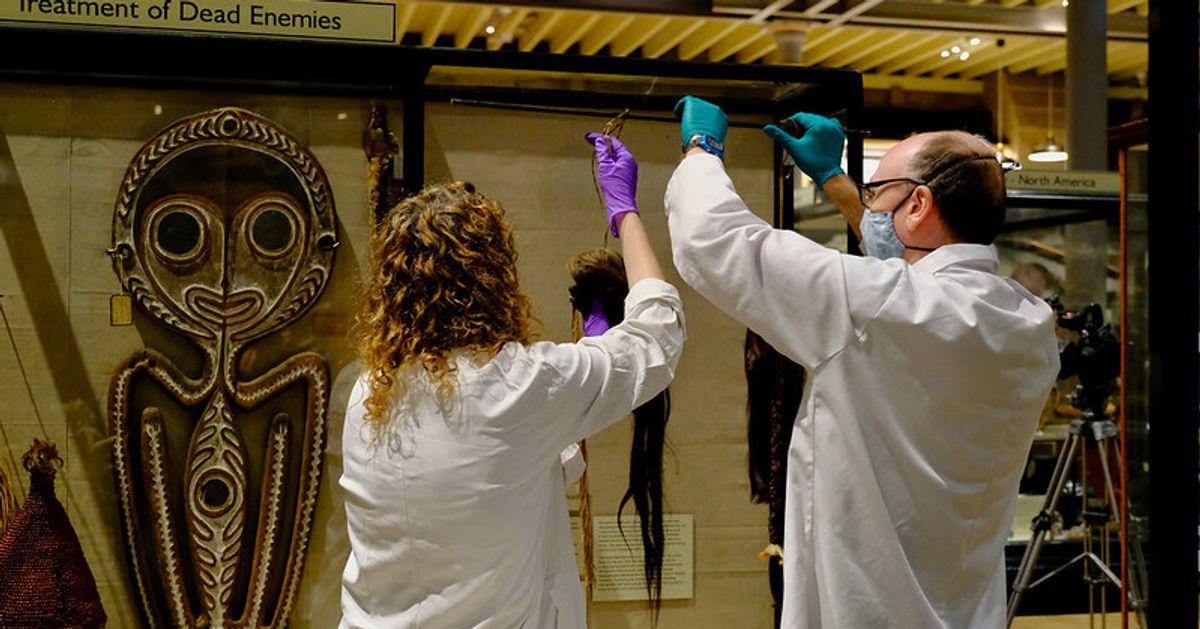The shrunken heads have been a major visitor attraction at the Pitt Rivers Museum in Oxford © Pitt Rivers Museum, University of Oxford/Photograph: Hugh Warwick
The shrunken heads at Oxfords Pitt Rivers Museum have just been removed from display, after 80 years. In a case prominently entitled “Treatment of Dead Enemies”, they have long been the greatest attraction for many visitors, but will be hidden away in store when the museum reopens on 22 September after the coronavirus closure.
Known as tsantsas, the shrunken heads were made by the Shuar and Achuar people who live in the rain forests of Ecuador and Peru. Until the late 19th century the heads of dead male enemies were taken and preserved to acquire the powers that had been located in the bodies of their foe.
Tsantsas were made by peeling back the skin and hair of a severed head. The bones, brain and other matter were discarded, with the skin being soaked briefly in hot water to shrink it. The eye sockets and mouth were sewn shut to prevent the escape of what was regarded as a dead mans soul, with the resulting heads ending up the size of a large orange.
The Pitt Rivers Museum has 12 tsantsas, acquired between 1884 and 1936. Of these, seven are human heads (the others are sloth and monkey).
Laura Van Broekhoven, the museum director, has been overseeing an ethical examination of the museums entire display, which contains over 50,000 objects. This has resulted in a total 120 objects made with human remains from all cultures being removed to the stores in the past few weeks, including the tsantsas.
Although there has been much discussion in recent years about change at ethnographical museums across the world, this has been intensified by repatriation claims and the Black Lives Matter protests.
The museums audience research has shown that visitors often see the displays of human remains as a testament to other cultures being “savage”, “primitive” or “gruesome”. Van Broekhoven says that “rather than enabling our visitors to reach a deeper understanding of each others ways of being, the displays reinforced racist and stereotypical thinking that goes against the Museums core values”.
She believes that action is now needed, not just talk: “Instead of waiting, we decided on a proactive aRead More – Source
[contf]
[contfnew]
the art news paper
[contfnewc]
[contfnewc]





